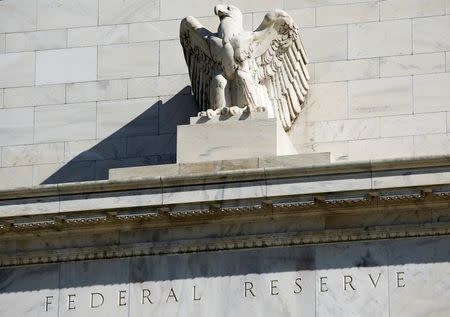Fed could use reserves payments to stimulate U.S. economy - paper

JACKSON HOLE, Wyo. (Reuters) - The Federal Reserve could push banks to lend more by paying Wall Street smaller returns on money stashed at the U.S. central bank when inflation is low, according to an academic paper presented on Saturday. The proposal was one of several discussed at an international gathering of central bankers who are looking for ways to stimulate economies even after they have cut interest rates to near zero and flooded banks with money. In his paper, economist Ricardo Reis put forward a new way for the Fed to pay banks returns on the money they keep at the central bank, a tool that could potentially put the Fed's goal of keeping inflation at 2 percent on autopilot. Banks currently have about $2.6 trillion at the Fed, a trove that swelled during a massive Fed bond-buying campaign aimed at fighting the 2007-2009 recession. The Fed currently pays 0.5 percent on reserves, which some critics view as a giveaway to banks. The central bank uses that rate as a way to keep the rates for overnight interbank borrowing from going beyond its target range, relying on reverse repo operations to set the floor. But under Reis's proposal, the Fed would also use the reserves rate as a stimulus mechanism, indexing its payments to the inflation rate. That would give banks an incentive to lend when the economy is weak and prices are rising more slowly. "When the central bank promises a smaller payment, reserves are a less attractive investment, so banks will ... move away from reserves and into loans," Reis, an academic at the London School of Economics, wrote in the paper. The fluctuations in bank lending due to price changes could help the Fed keep inflation on target. Inflation rates in the United States and elsewhere in the world have been exceptionally low in recent years, and policymakers worry that economies are vulnerable to debilitating deflation. Reis said his proposal was "somewhat radical" and warrants more study before being tried out. He also assessed whether the Fed could stimulate the economy through the use of so-called "helicopter drops" in which it would create money and give it to the government to spend without requiring repayment. Reis argued that helicopter drops might be ineffective because the Fed already turns over its profits to the government and might reduce these transfers after such a move, leading the government to cut spending in the future. (Reporting by Jason Lange; Editing by Paul Simao)

 Yahoo Finance
Yahoo Finance 